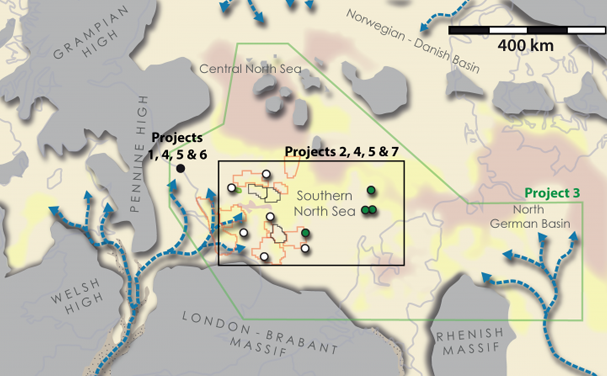CASP has announced the release of their latest report: "A palynozonation of the Bunter Sandstone CO₂ storage complex: offshore well study."
This follow-up to our onshore study (Report number CASP.BSSC.1) applies a refined Triassic palynostratigraphic framework to offshore wells across the UK and Dutch sectors of the Southern North Sea Basin and extends its application to the Dutch onshore and Central North Sea.
The report presents the most comprehensive Triassic palynozonation of the basin to date, refining age constraints for key reservoir and seal intervals, and enhancing cross-border correlations. These findings establish a robust stratigraphic foundation for geological carbon storage and geological disposal facility projects within this strategically important interval across the Southern North Sea and neighbouring regions.
Key highlights:
- 364 samples analysed (295 from the Southern North Sea/Dutch onshore, 69 from the Central North Sea)
- Identification of 12 biozones (Changhsingian–Hettangian)
- Improved dating of key reservoir and seal intervals
The report’s authors are Niall W. Paterson, Benoit Vautravers and Stephen Vincent
Palynostratigraphy of the Bunter Sandstone CO2 storage complex in the Southern North Sea
The chronostratigraphy and internal subdivision of the Bunter Sandstone CO2 storage complex are poorly constrained. This study will addresses these knowledge gaps by applying the novel palynozonation established in Project 1 (CASP.BSSC.1) to material from key wells within the UK and Dutch sectors of the Southern North Sea. This resultant correlation will aid the modelling of stratal architecture and CO2 migration pathways in the subsurface, which are essential for ensuring safe, long-term CO2 storage.
Research programme
This project will apply a previous established high-resolution palynological zonation to provide new, robust age constraints for the Bunter Sandstone CO2 storage complex in the UK and Dutch sectors of the Southern North Sea. This study will focus on key wells, which provide good quality conventional core materials through reservoir and seal intervals. Sampling will be conducted at high-resolution focusing on appropriate claystone and siltstone facies that will maximise palynomorph recovery. This study is one of several complementary projects comprising CASP’s Bunter Sandstone Storage Complex research theme that seek to understand the cyclostratigraphic, climatic and sedimentological controls on the reservoir and seal quality and architecture.
Deliverables
Results will be delivered via an interim data release with an associated presentation for client companies and a final technical report containing detailed sedimentary logs for the selected wells from the UK and Dutch sectors (Fig. 1), correlation panels and bioevent stratigraphy for the Bunter Sandstone CO2 storage complex (based on the analysis of up to 250 samples from eight selected wells), palynomorph range and occurrence charts in StrataBugs format, and photographic plates illustrating age diagnostic taxa. The project will conclude with a client workshop during which all data and interpretations will be presented and discussed.

Figure 1. Early Triassic palaeogeography for the Southern North Sea showing the location of the proposed cores from UK and Dutch sectors that will be sampled to establish a Southern North Sea correlation using the palynozonation developed in Project 1 (CASP.BSSC.1) using the Woodsmith Mine core materials. Modified from Geluk et al. (2018)
Contact Niall Paterson for further information about this research and licensing options.
KeyFacts Energy Industry Directory: CASP
 KEYFACT Energy
KEYFACT Energy